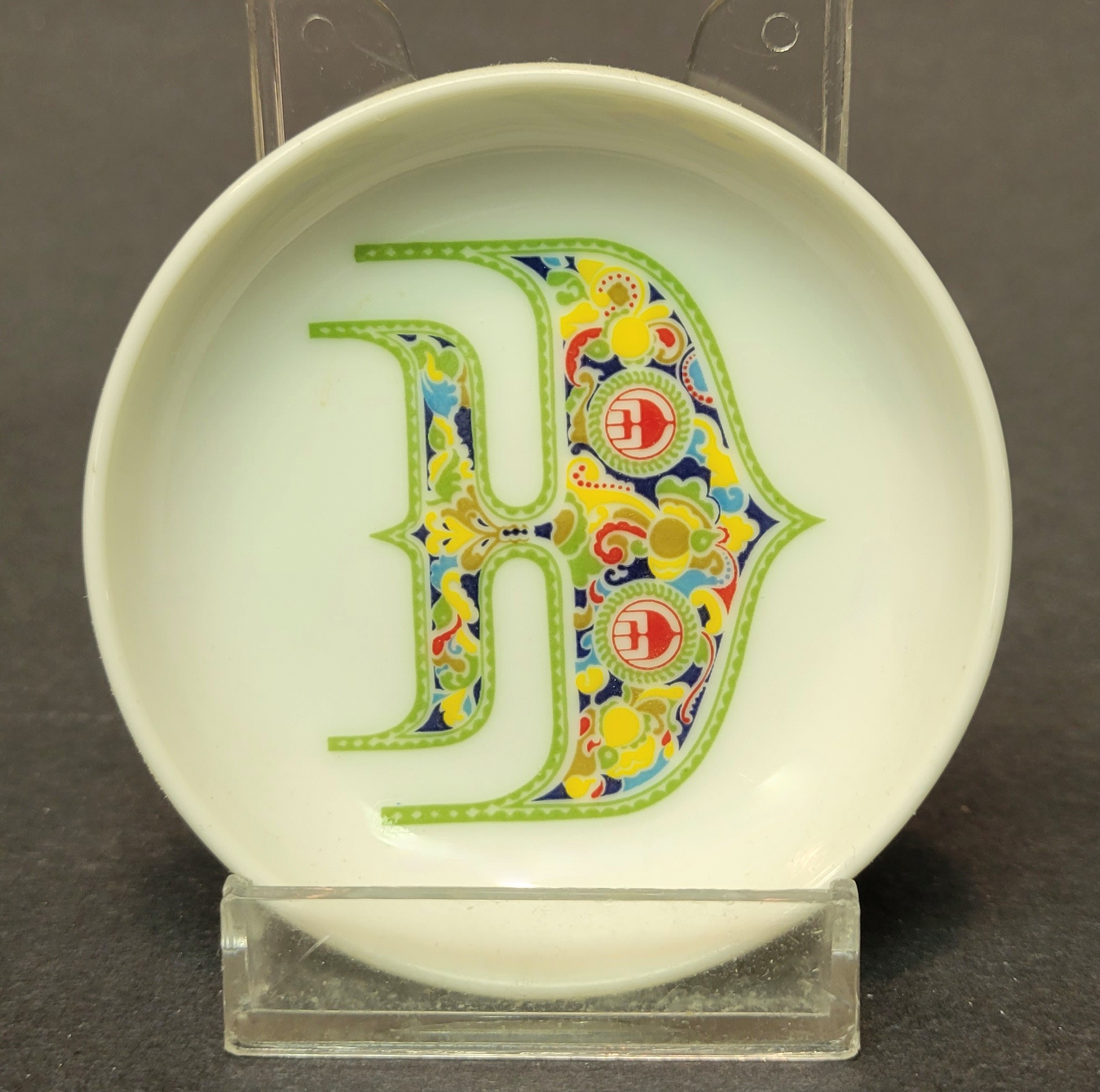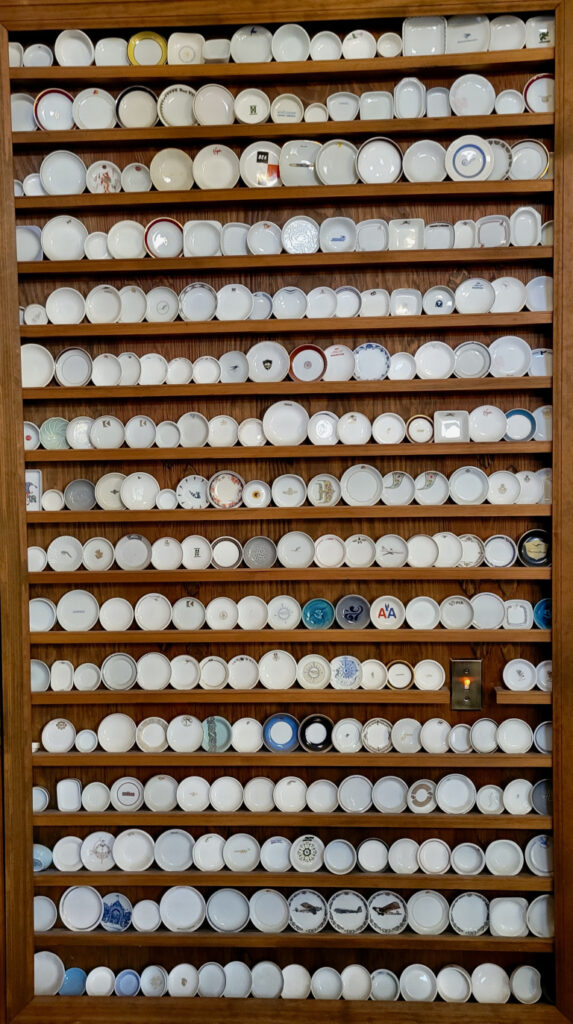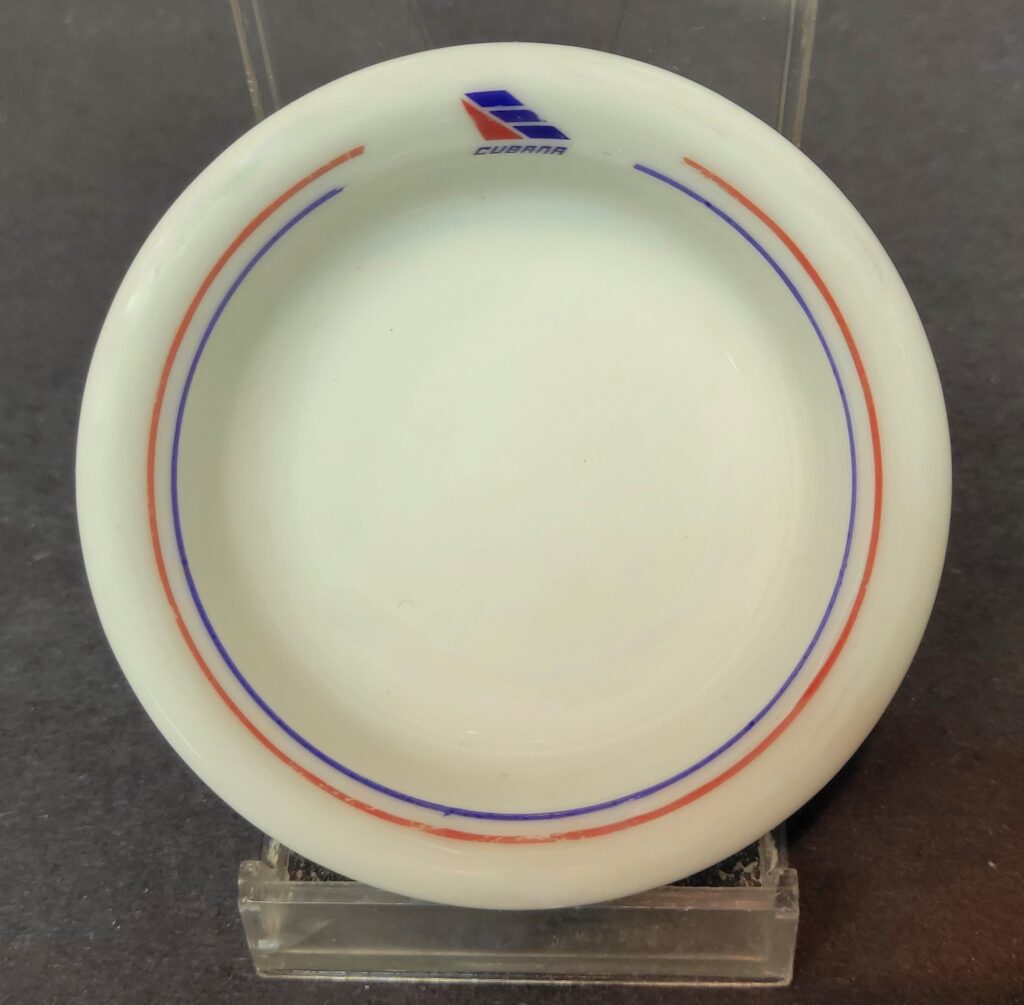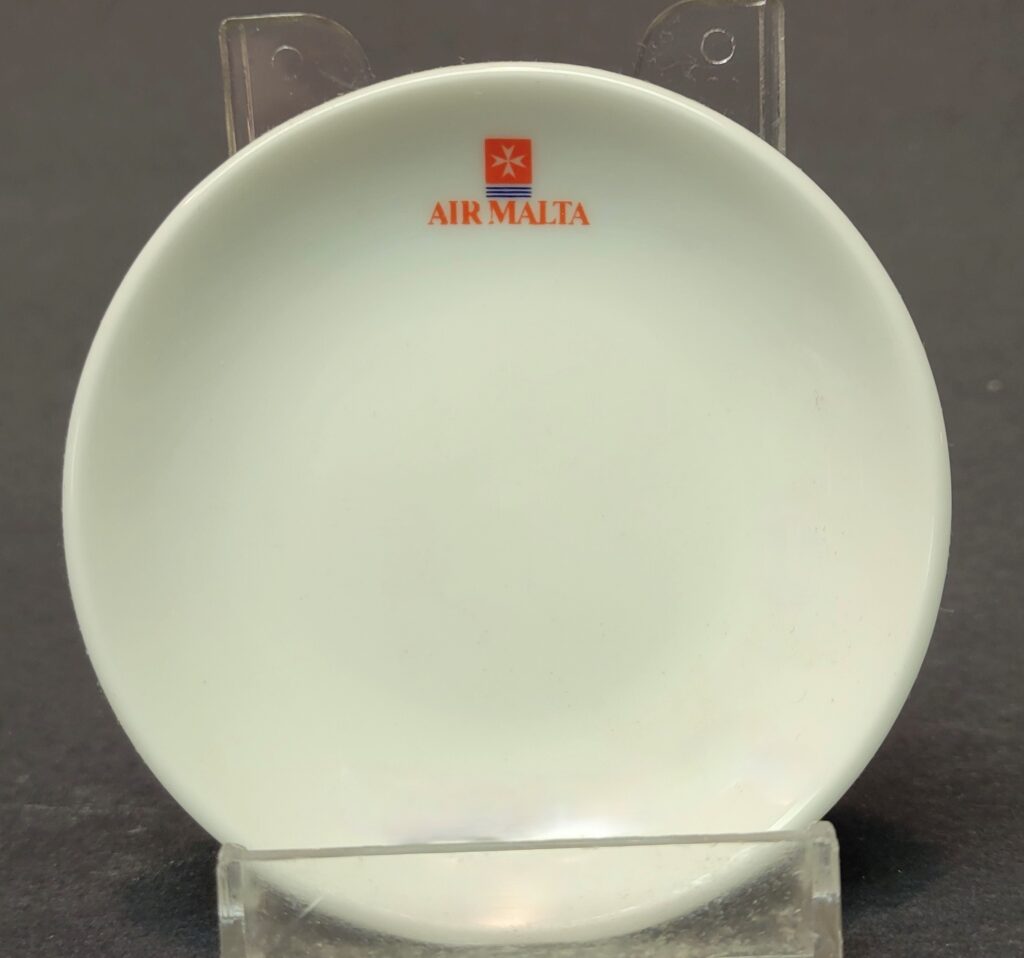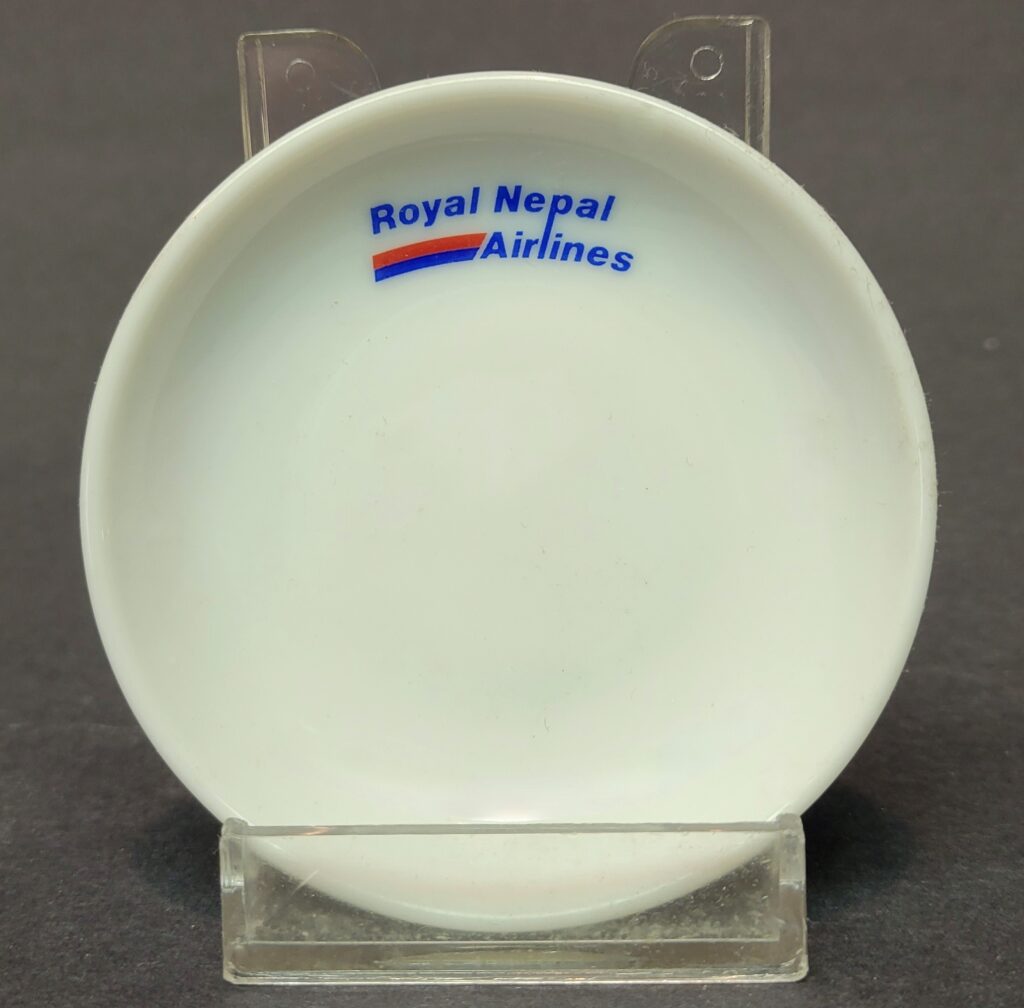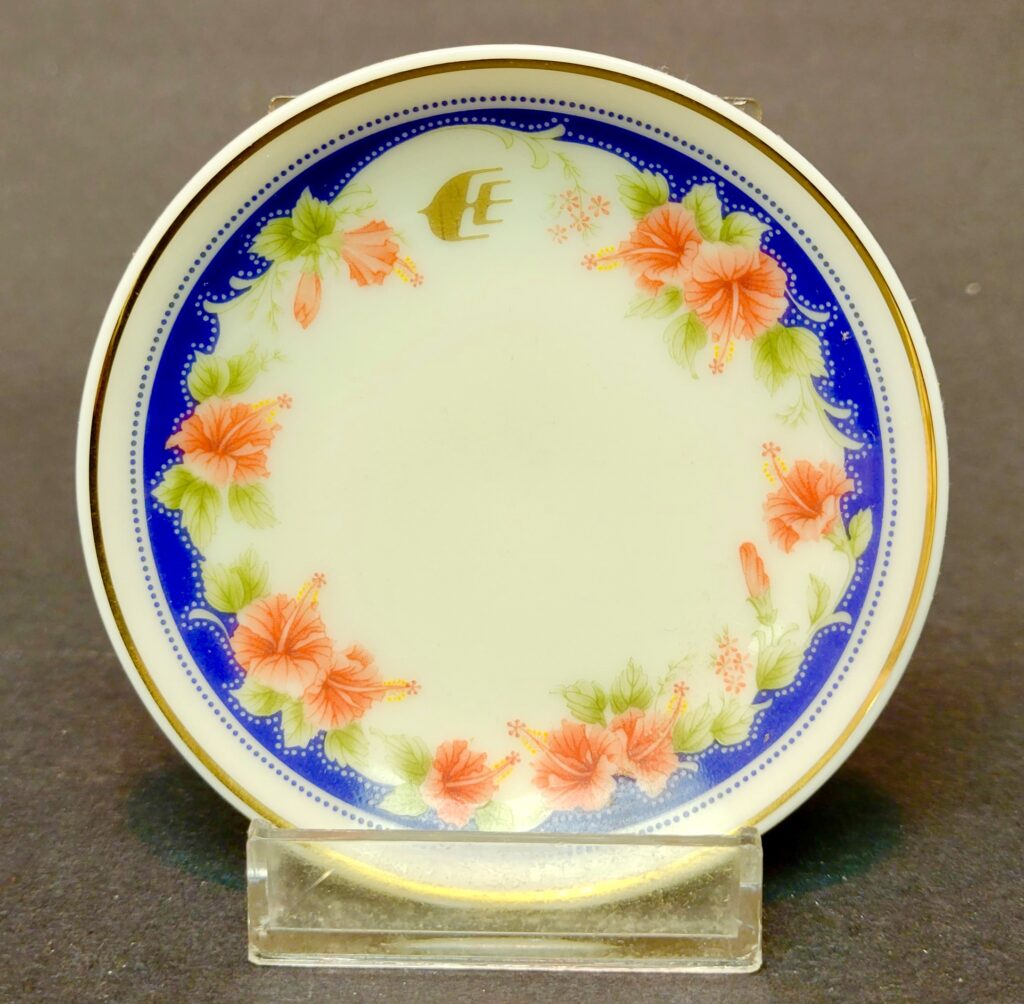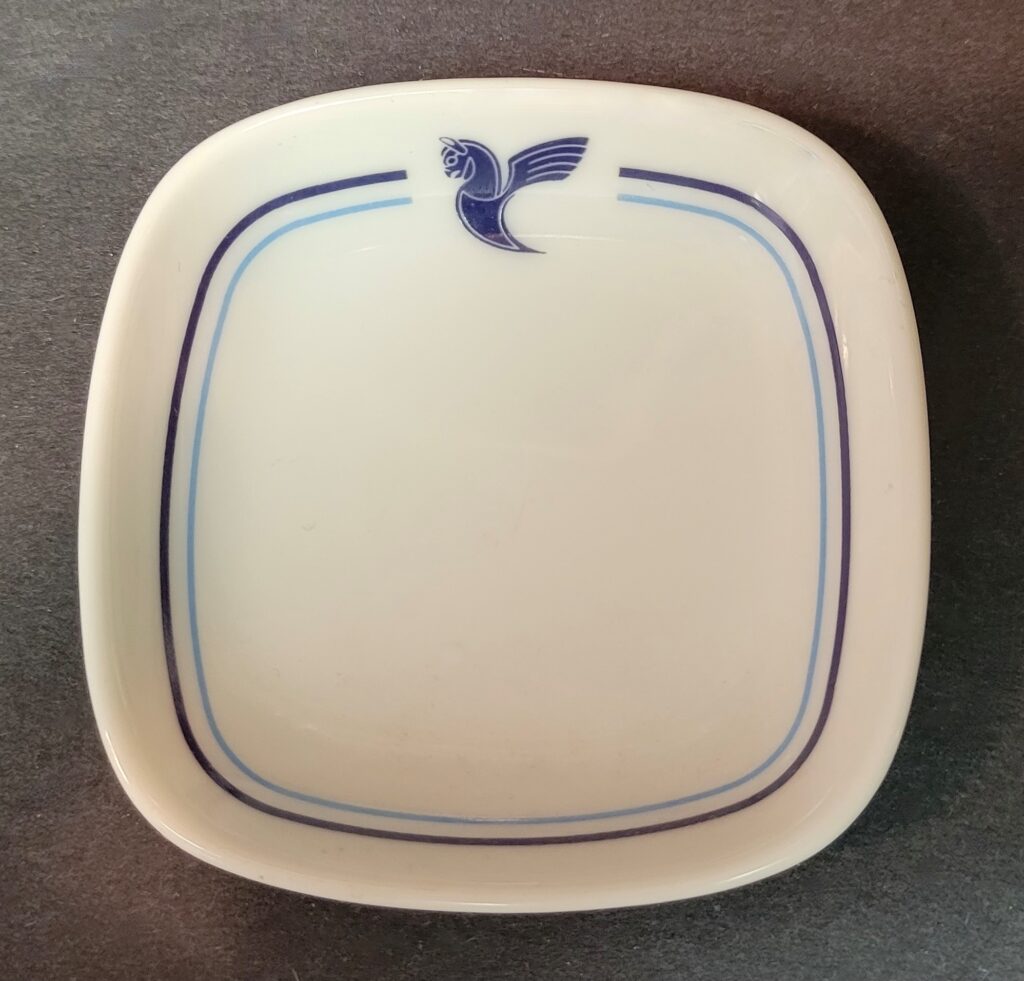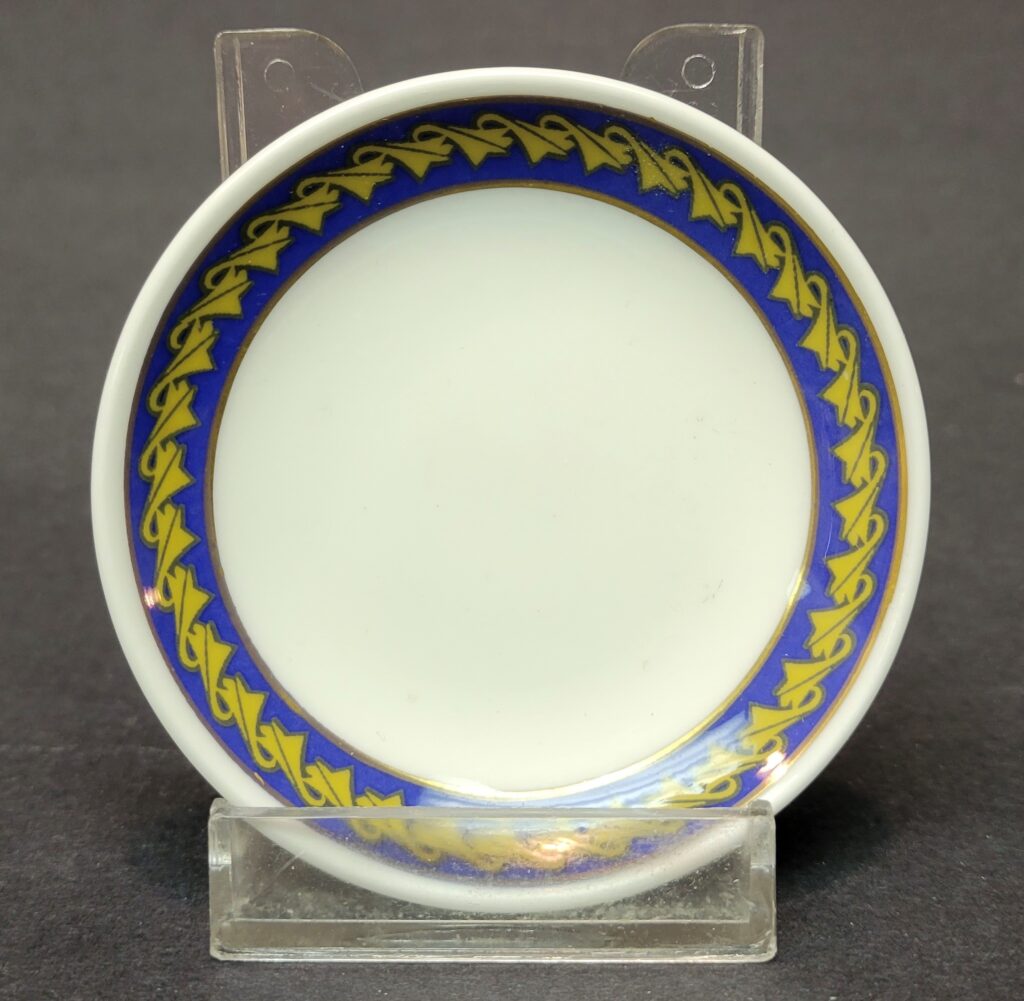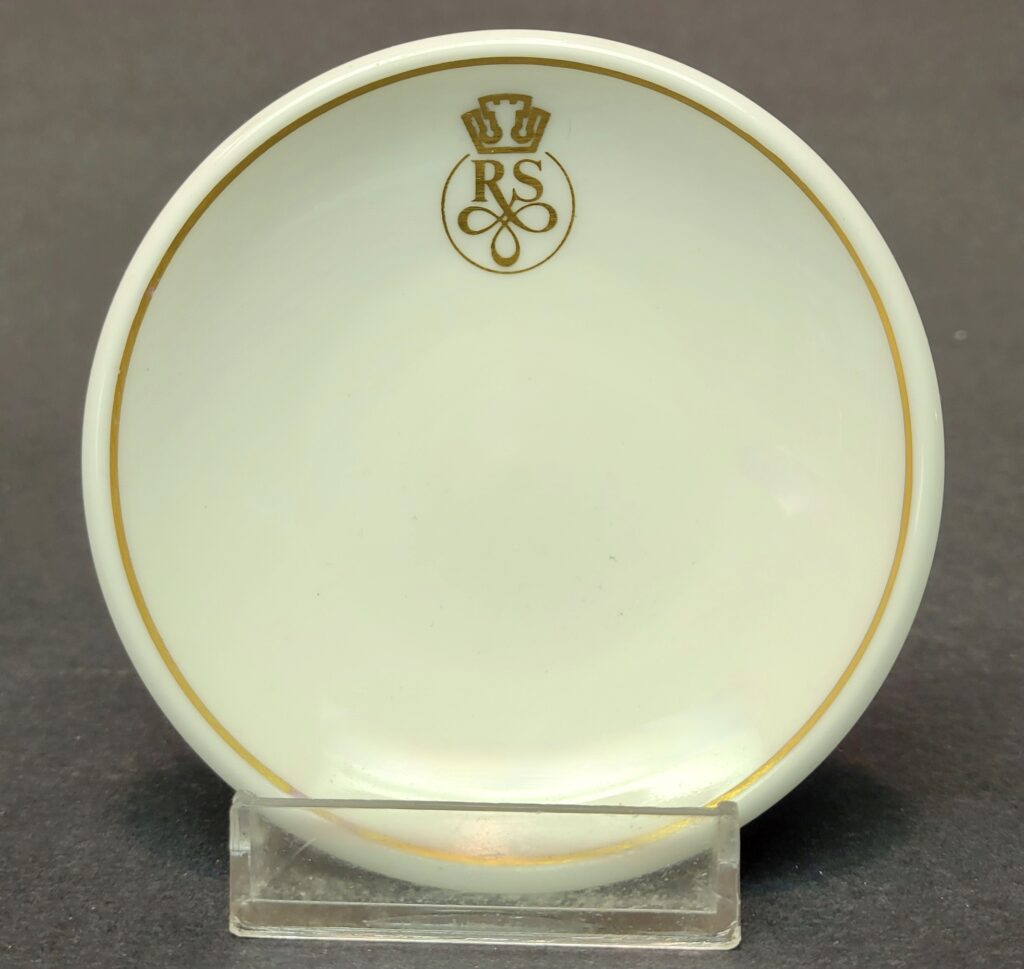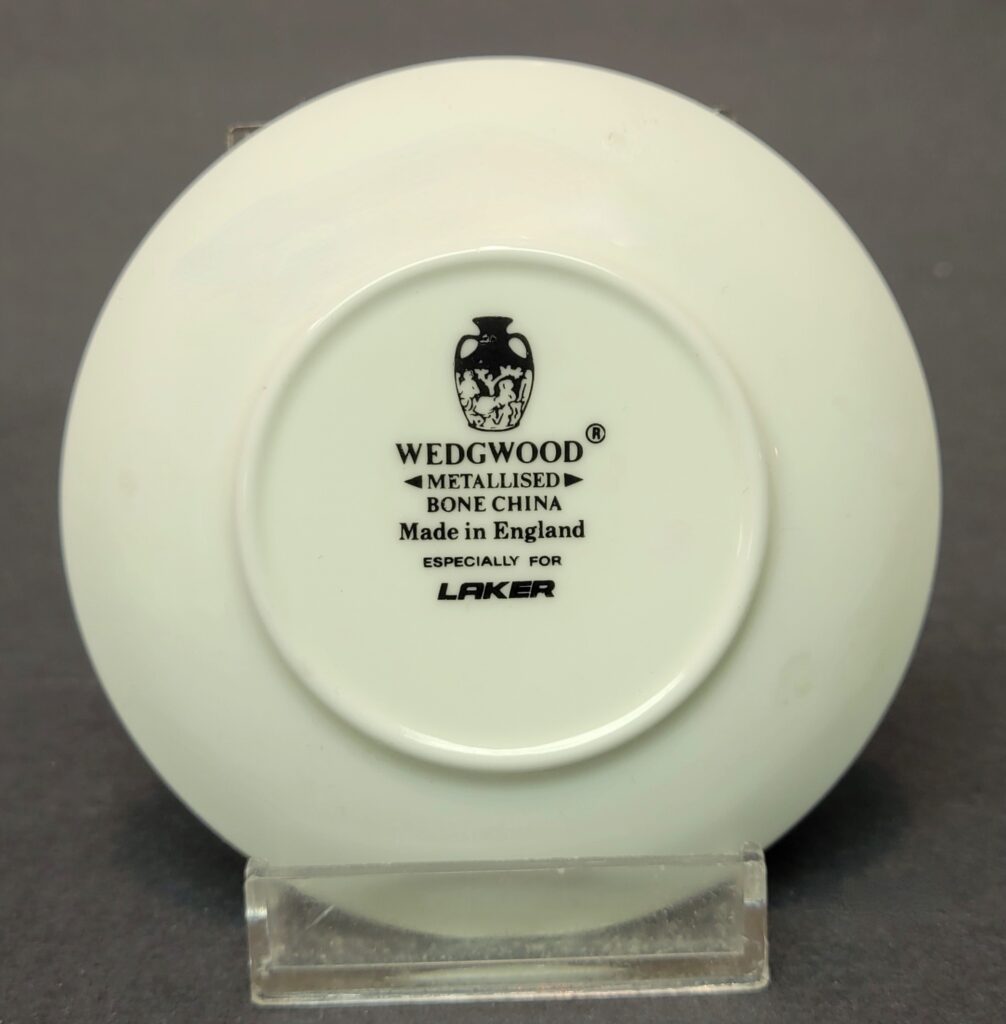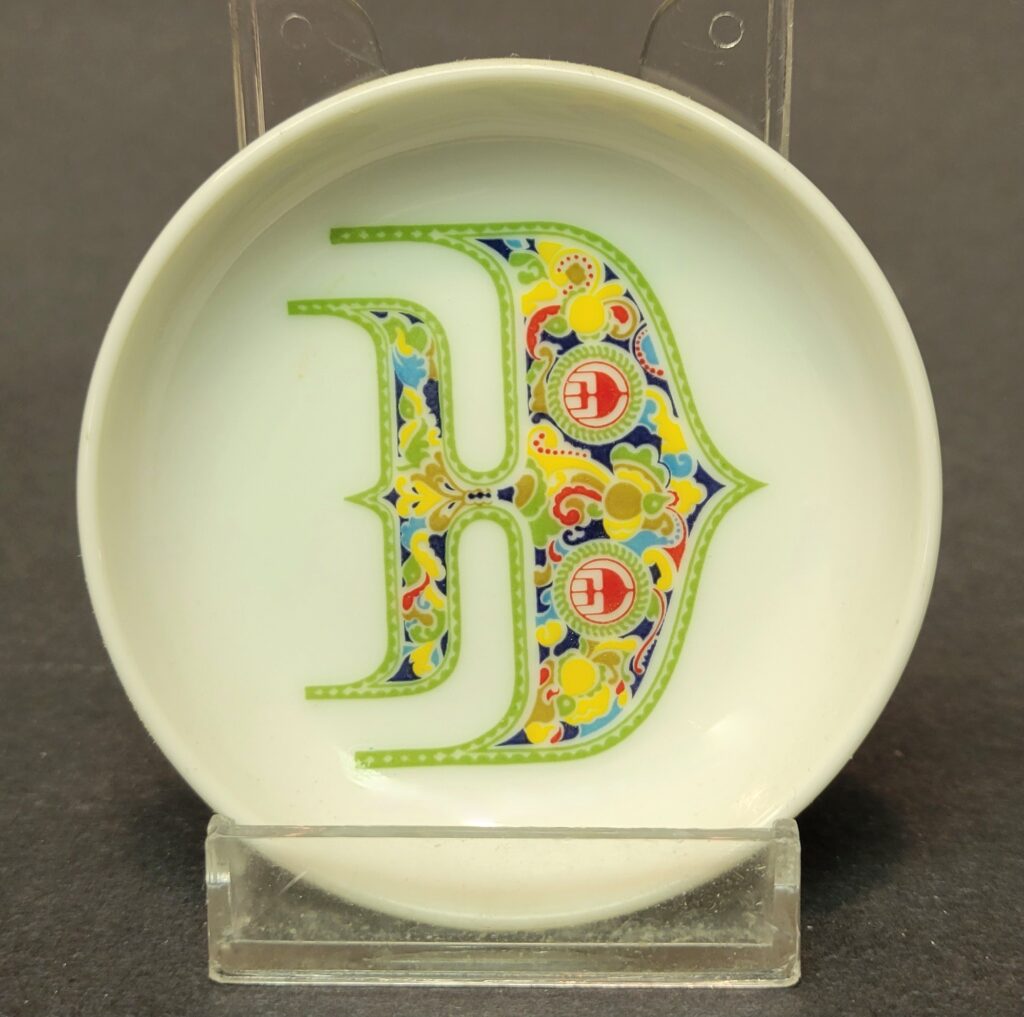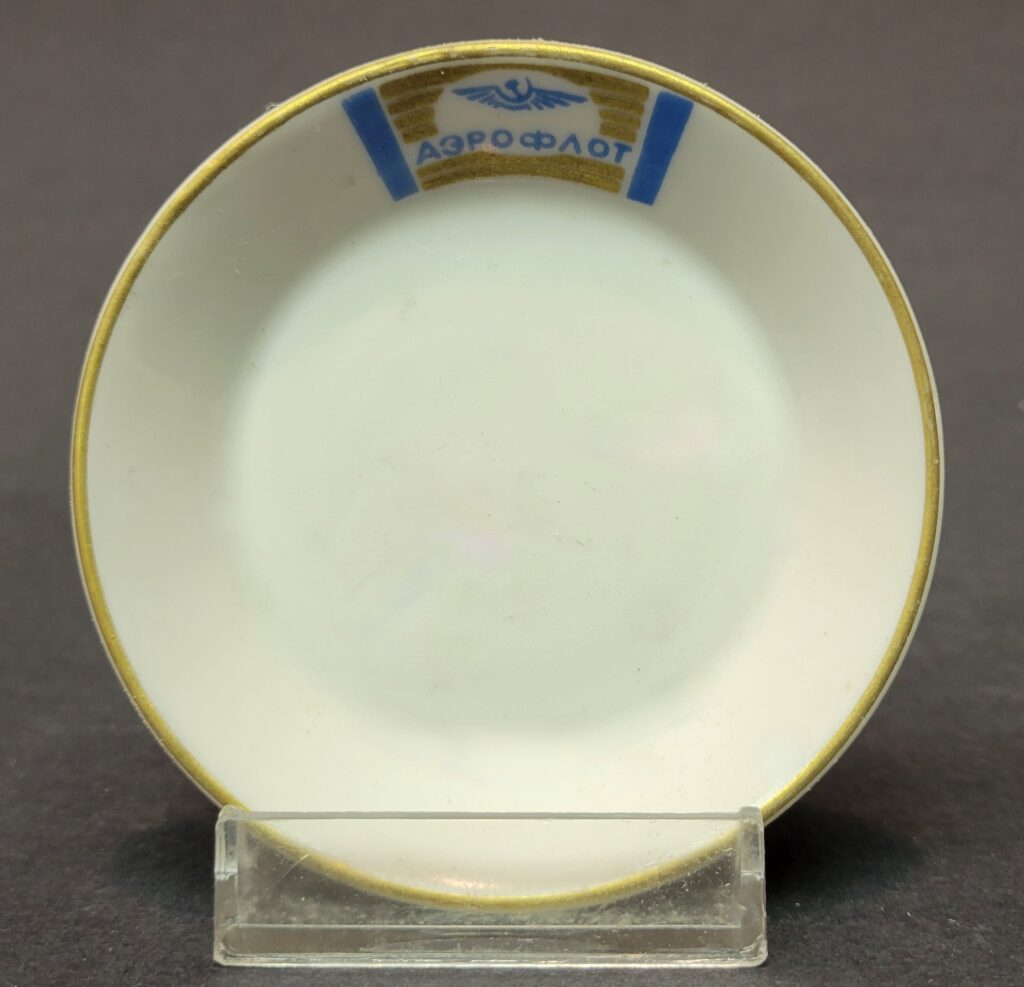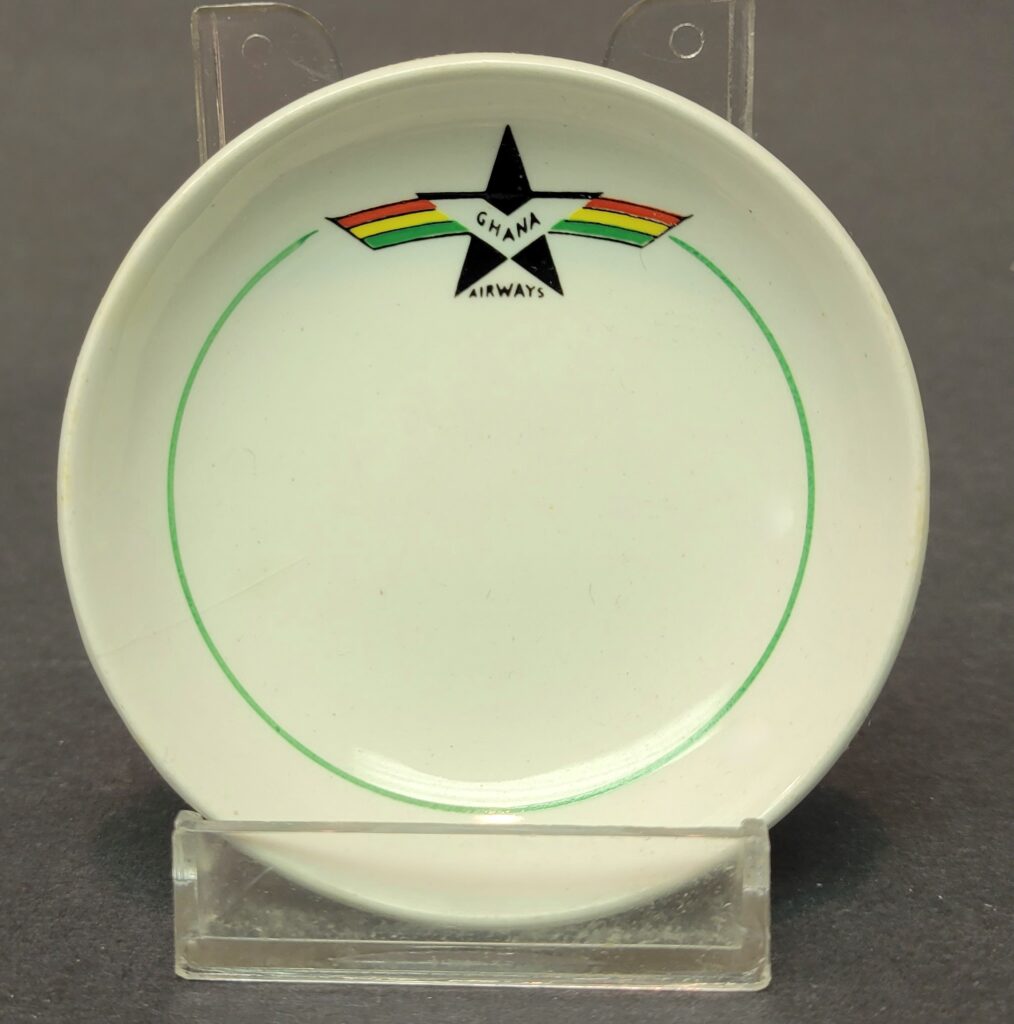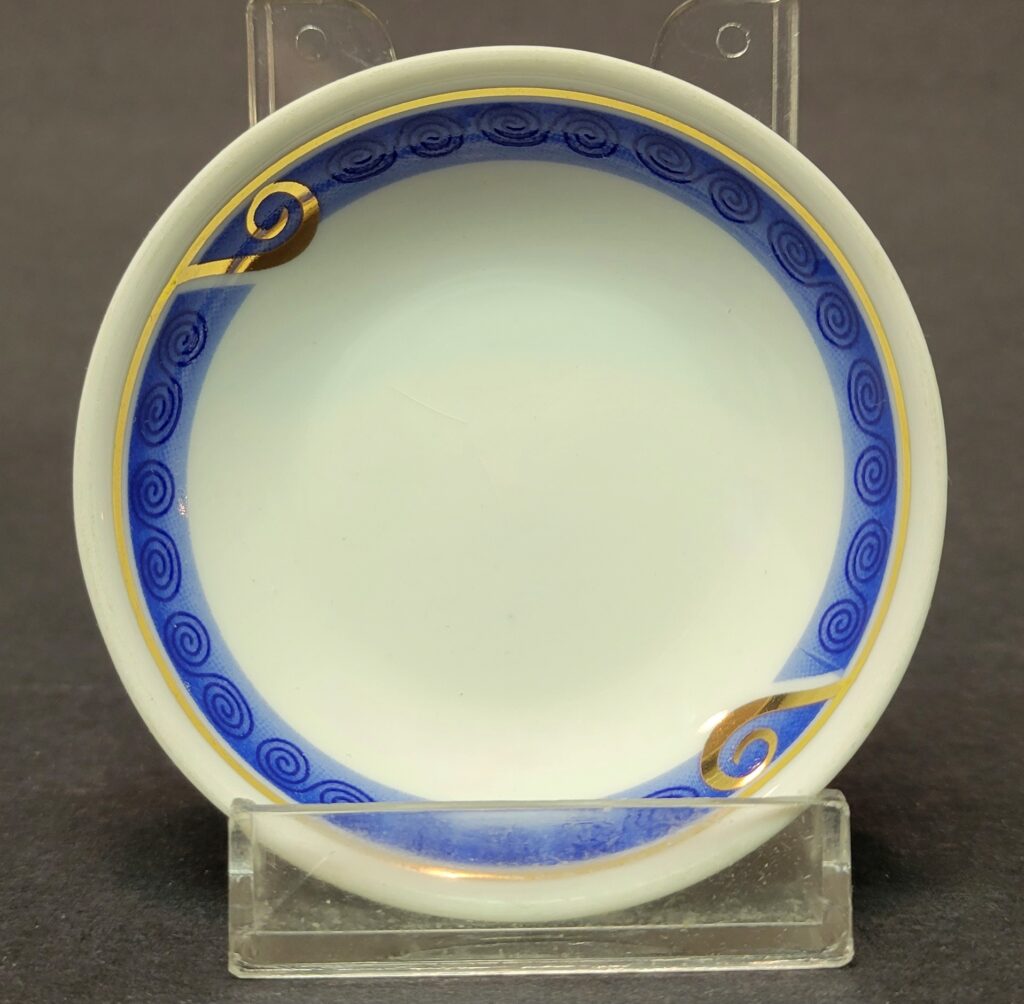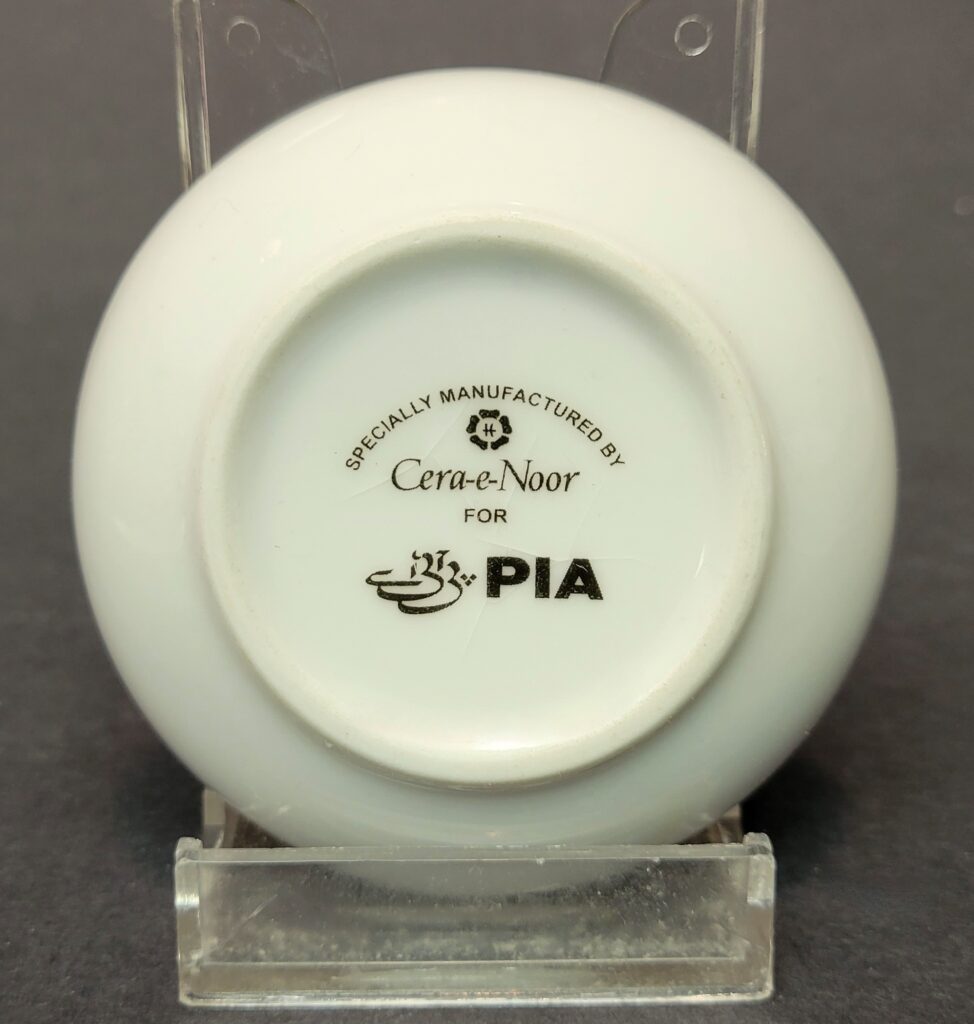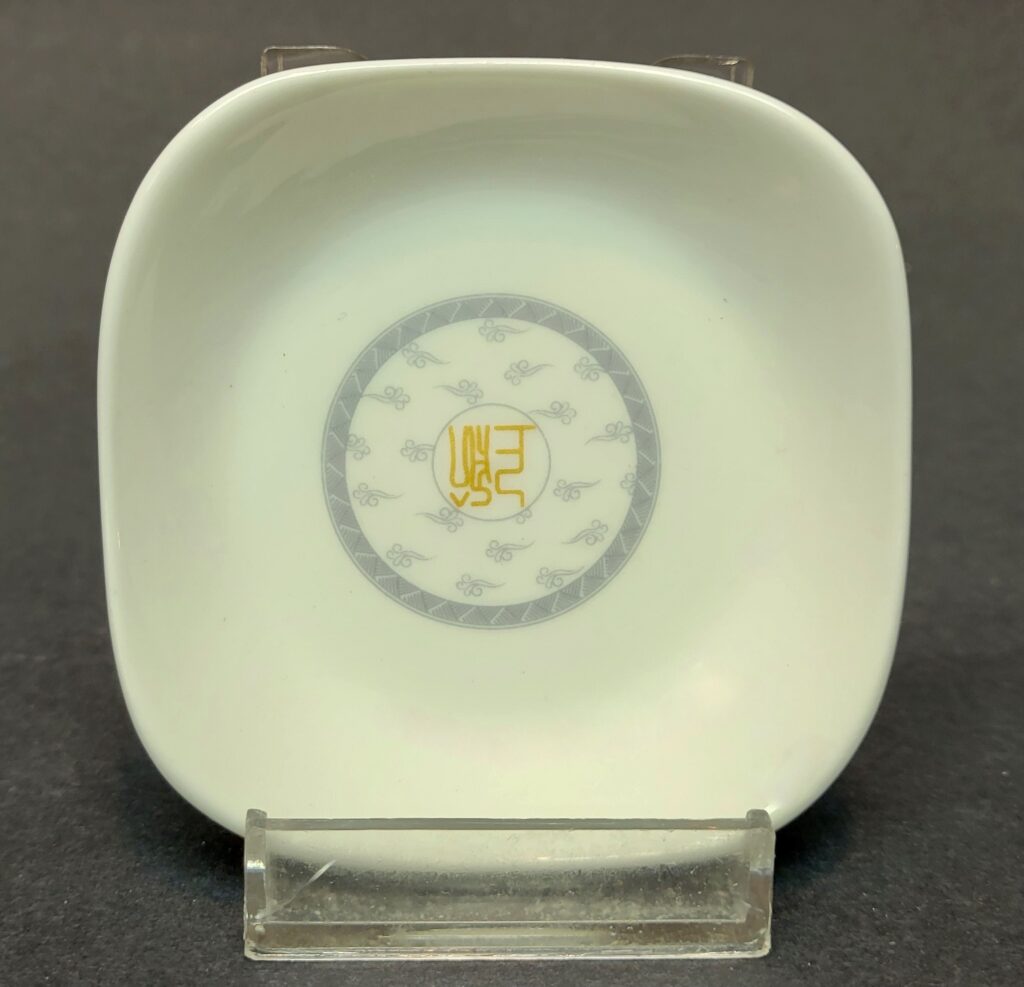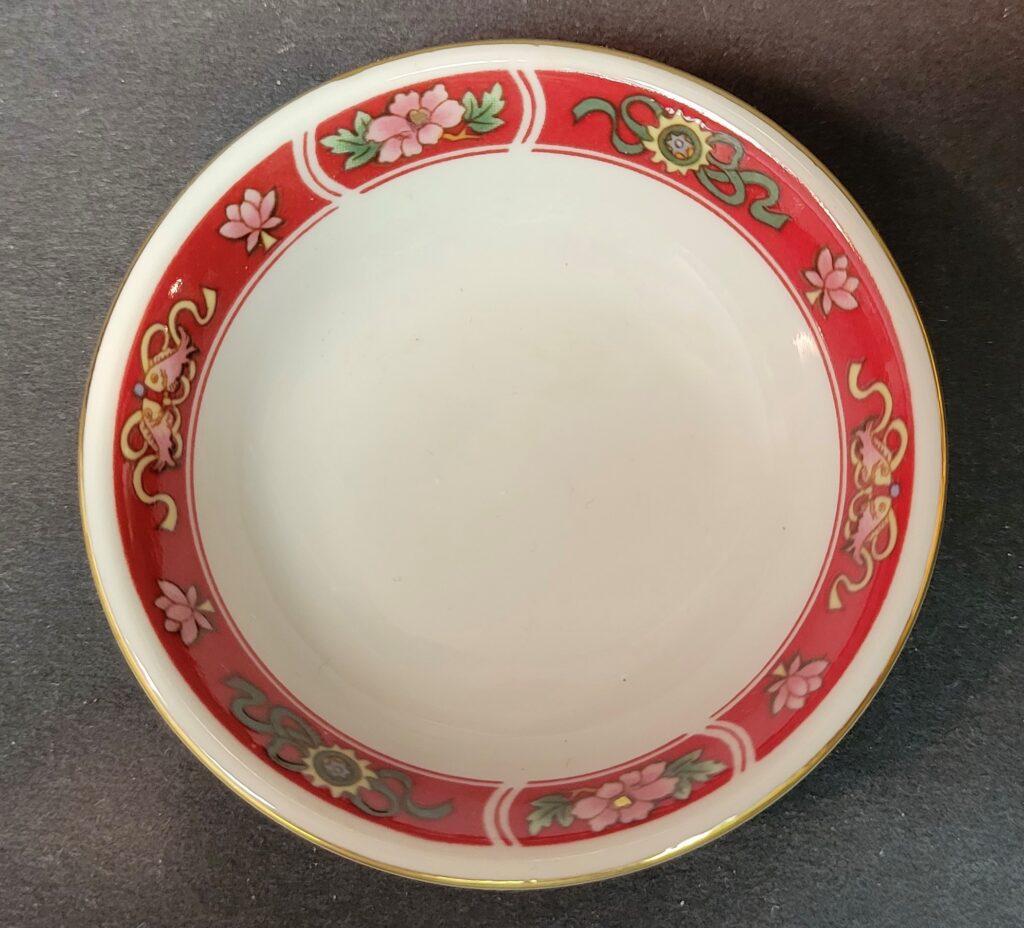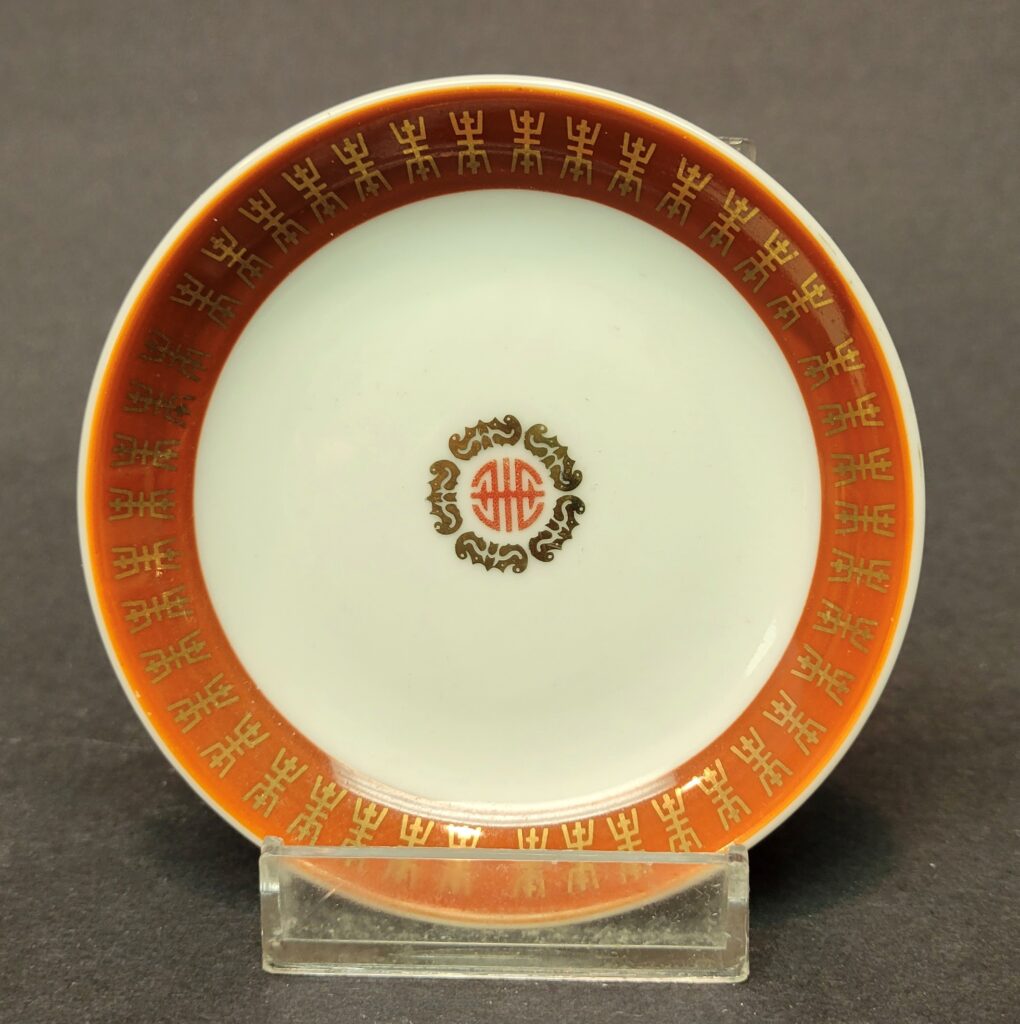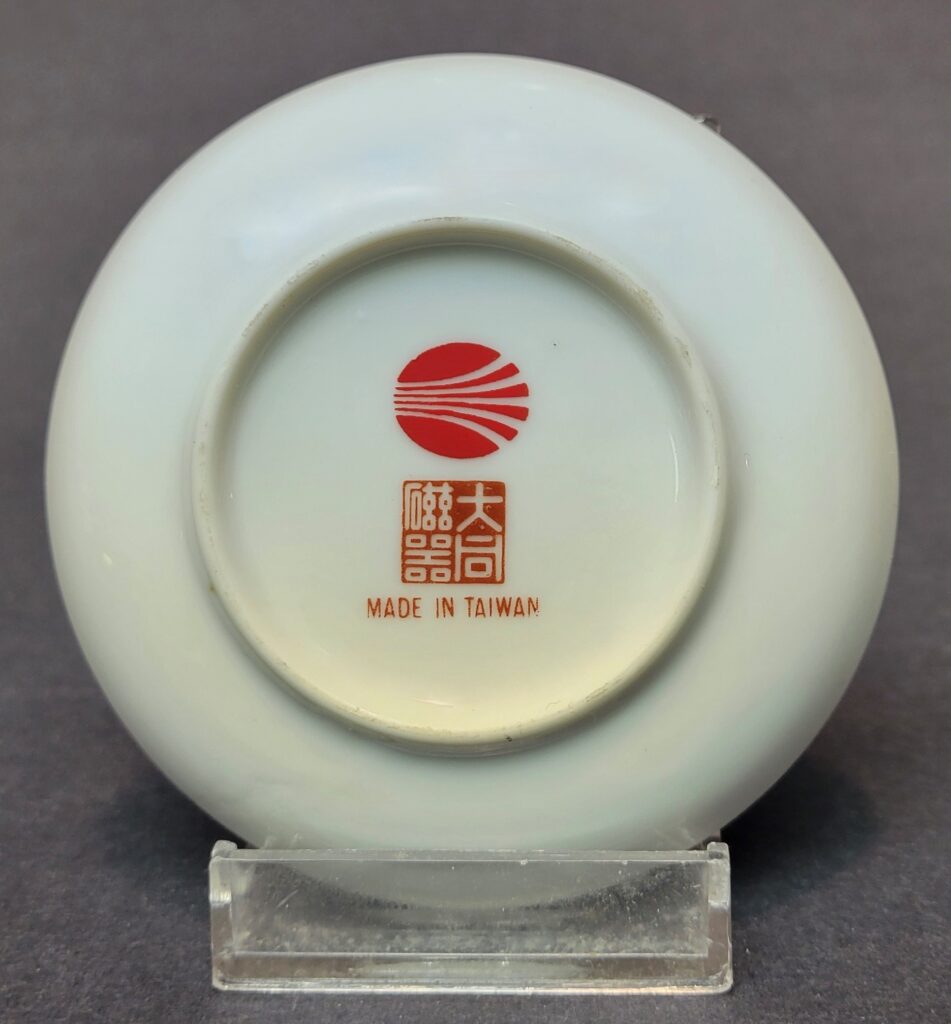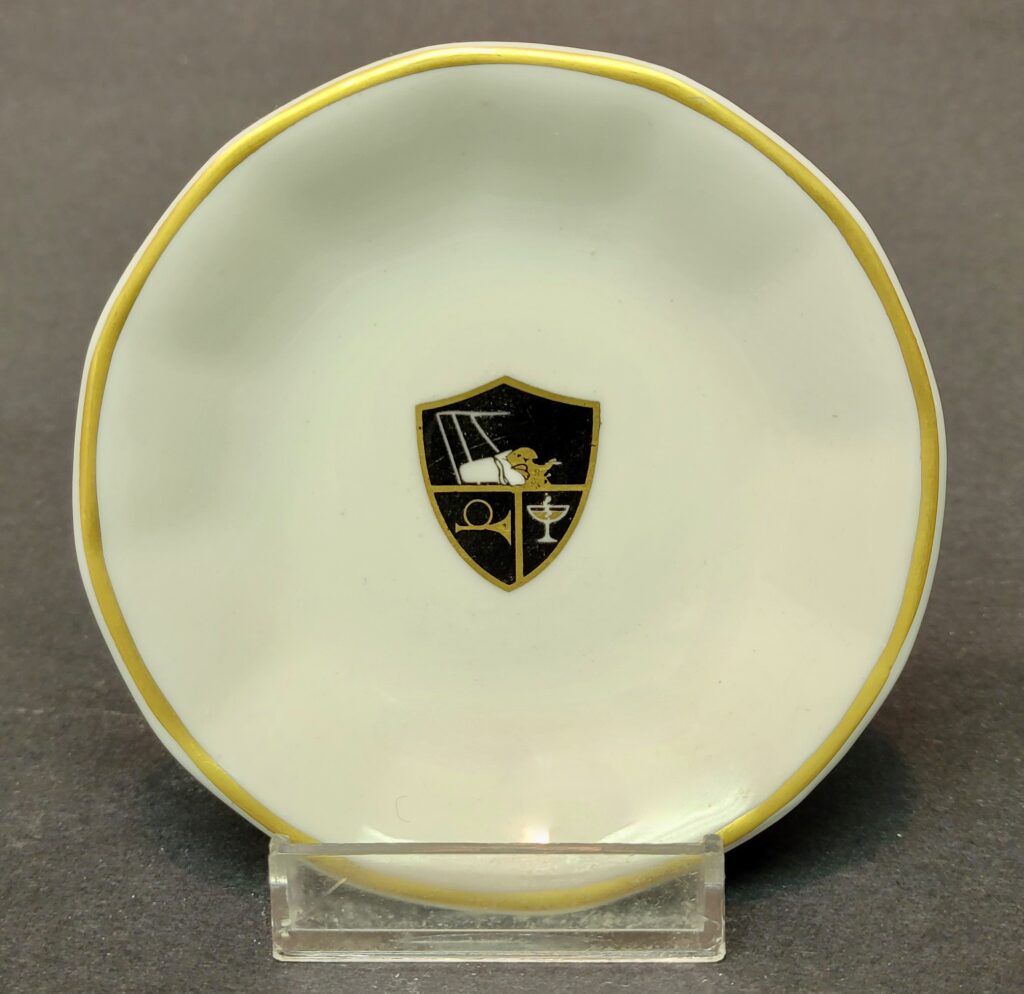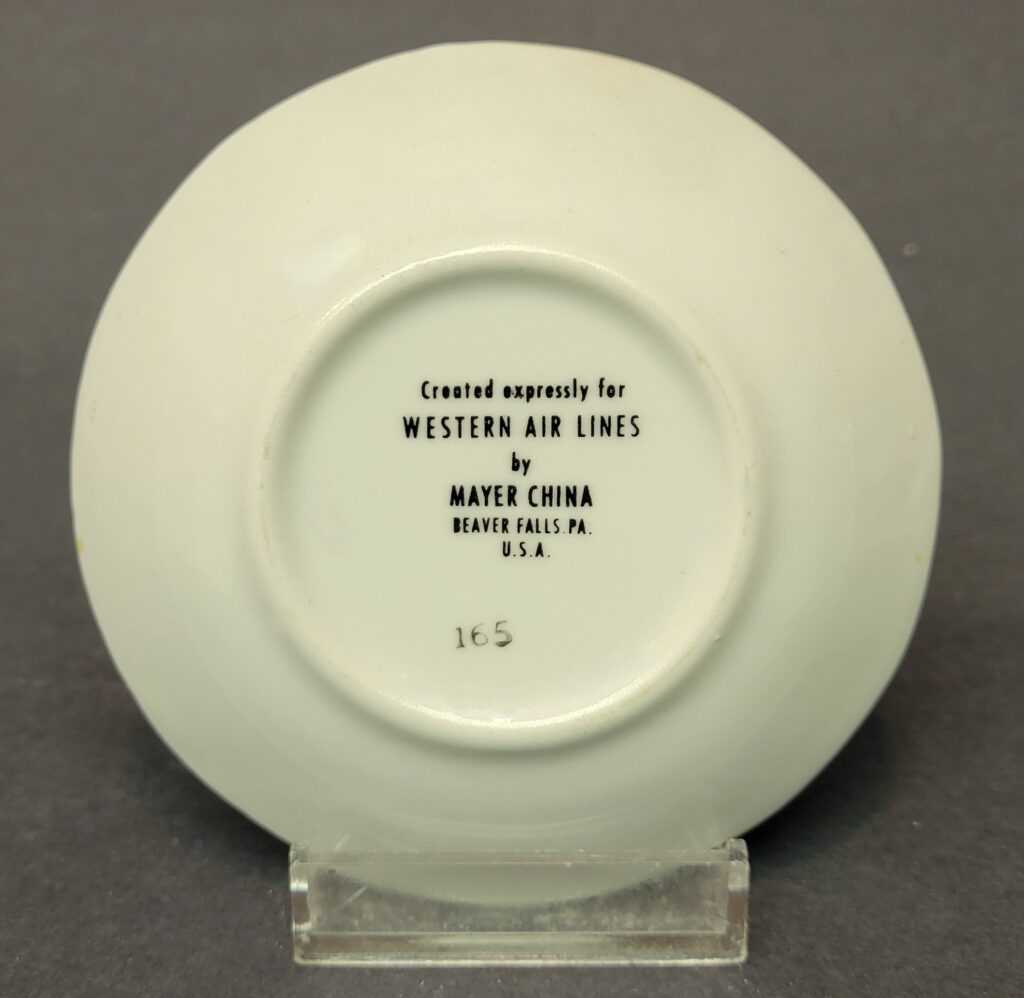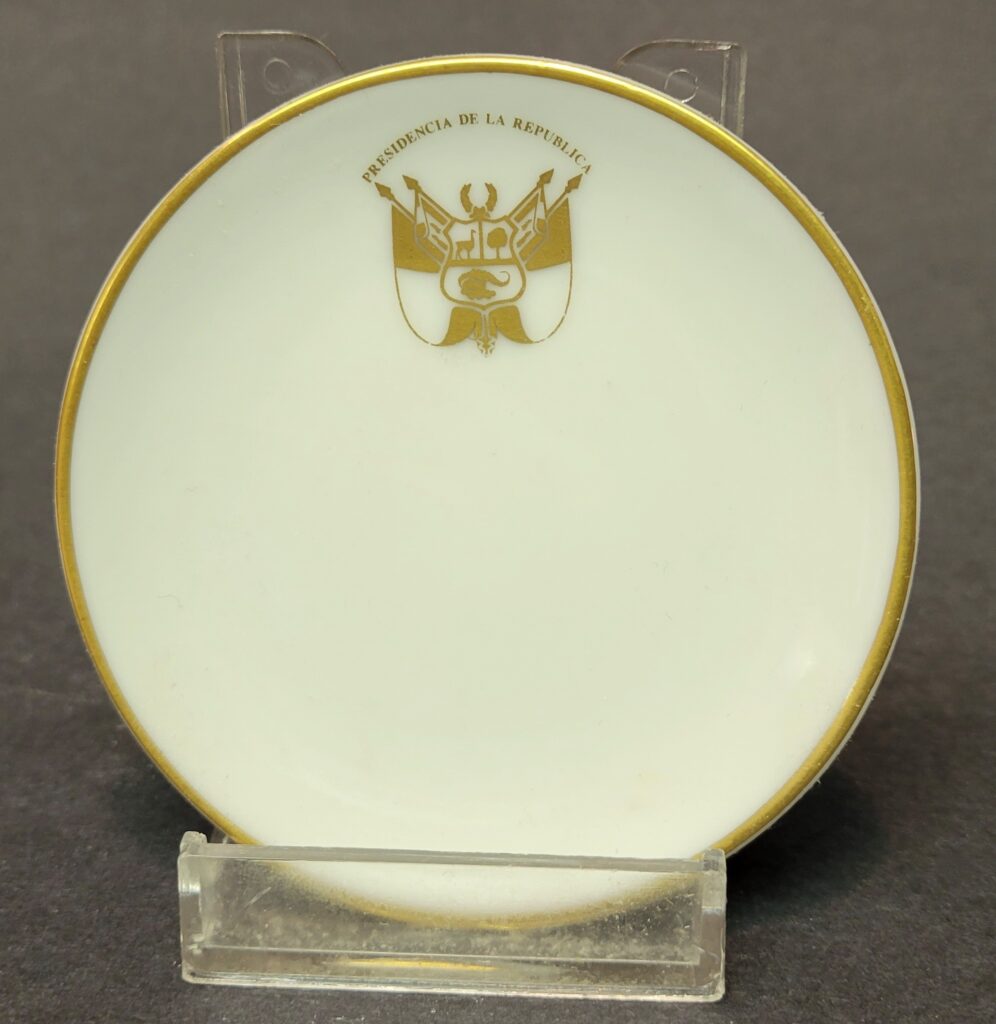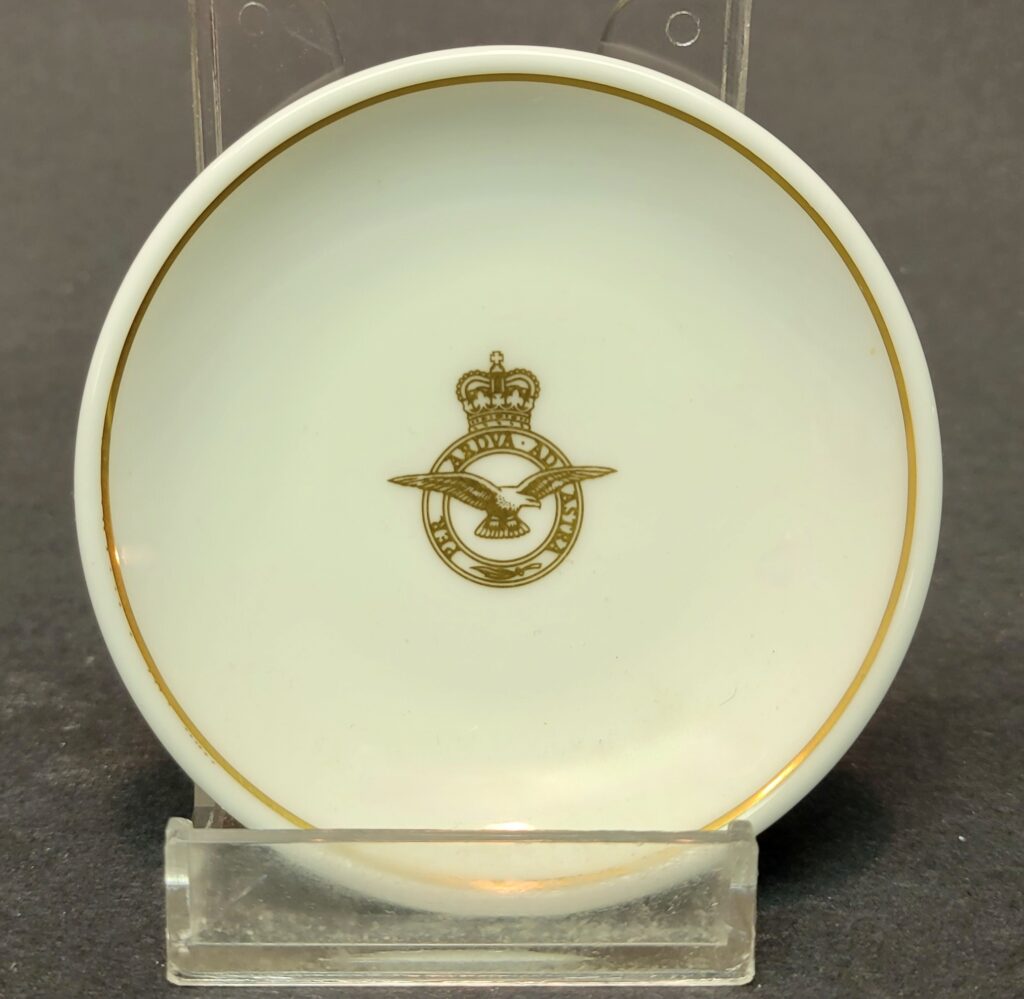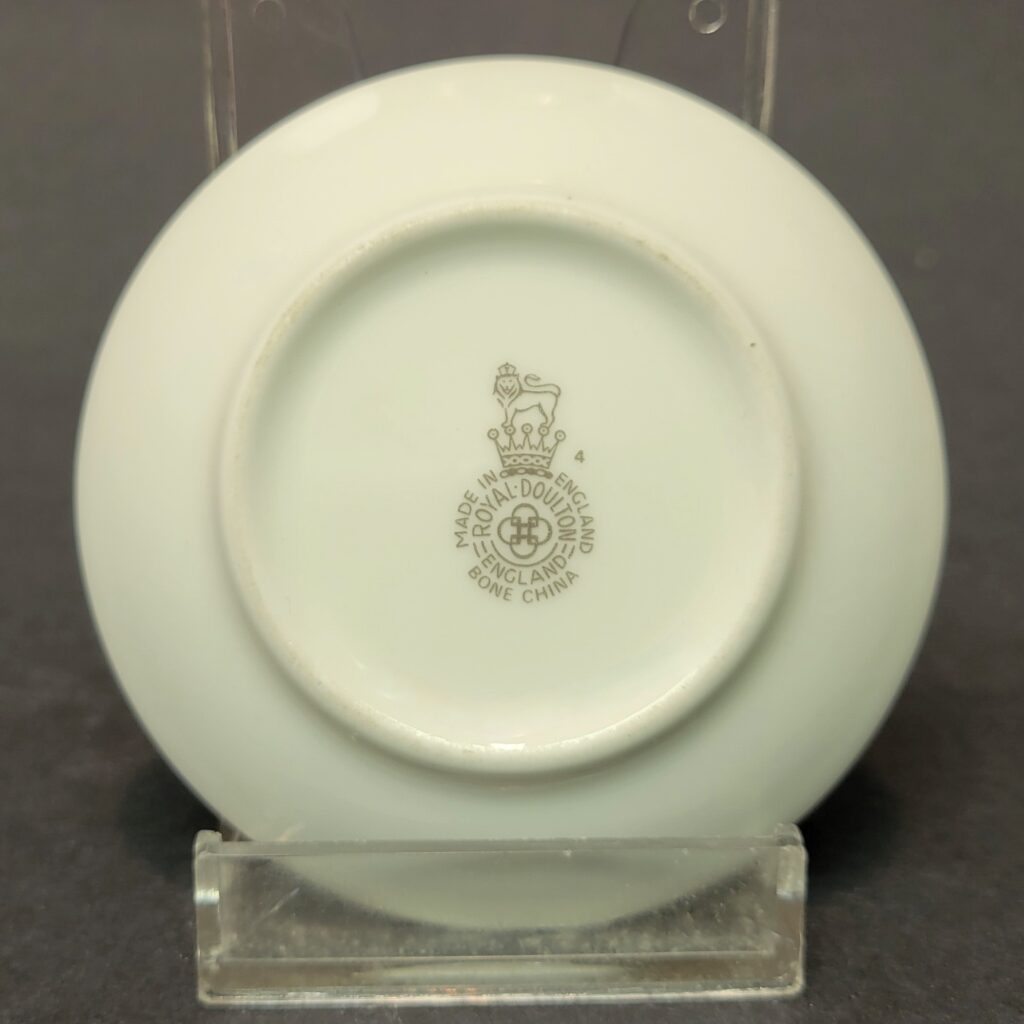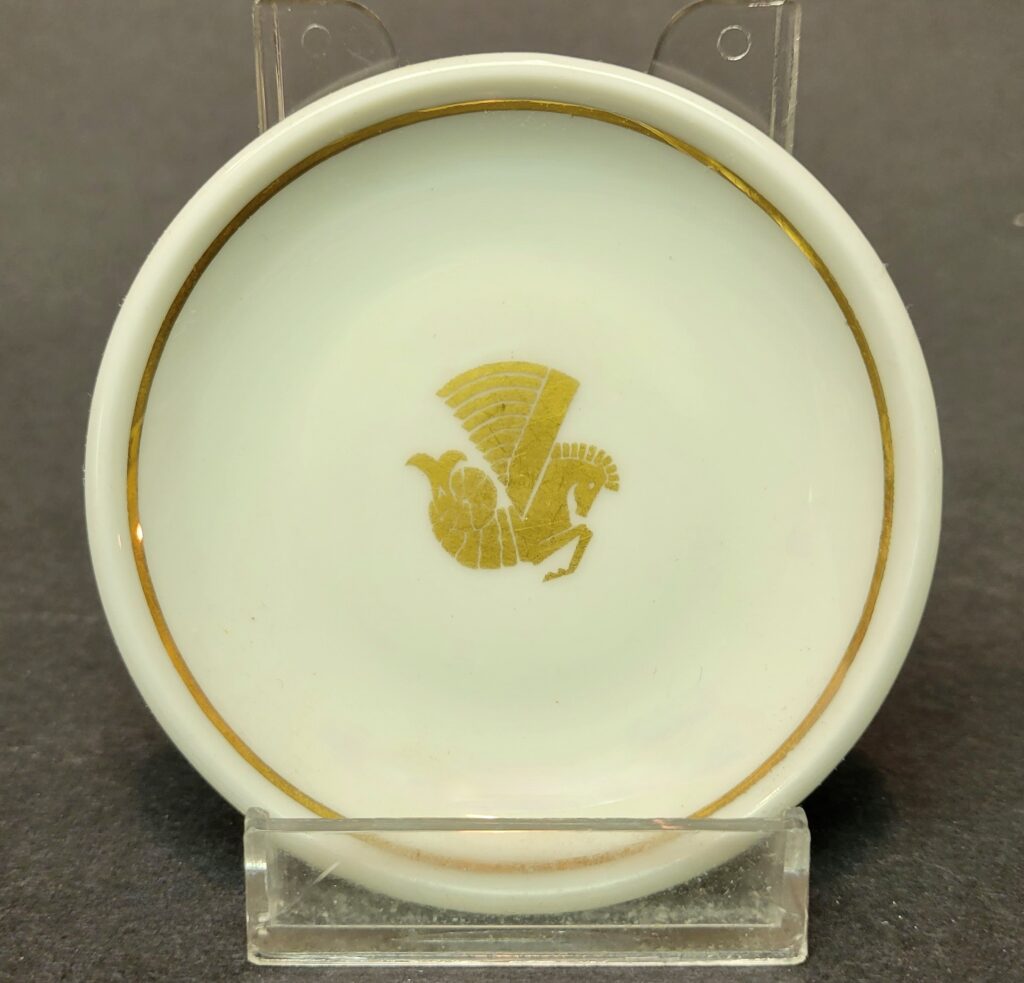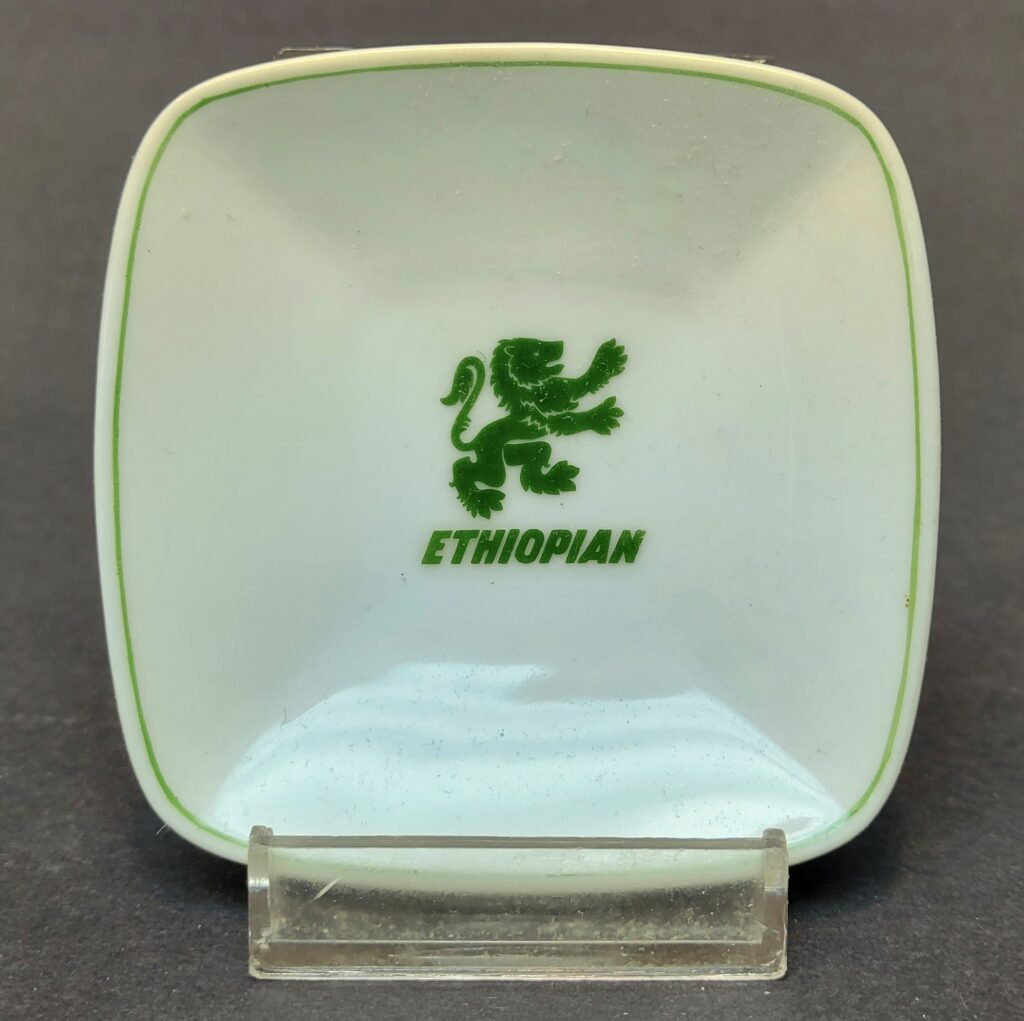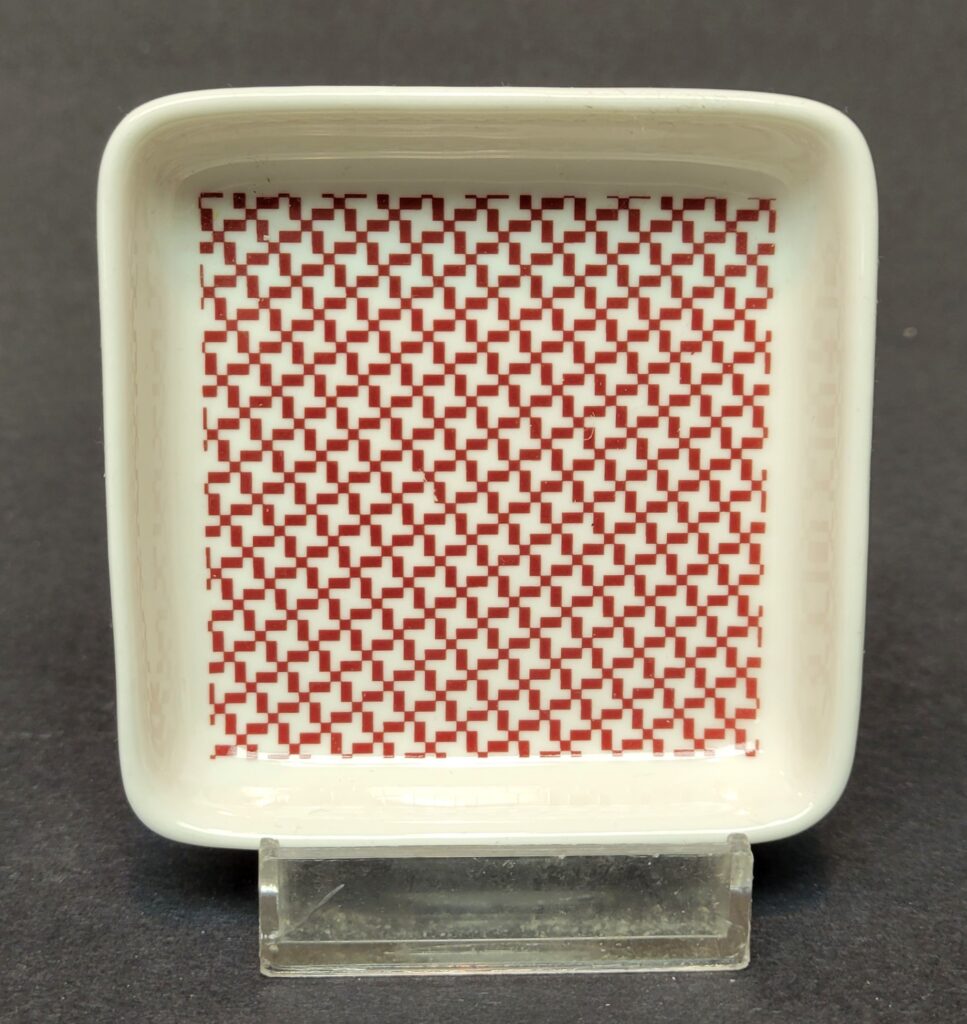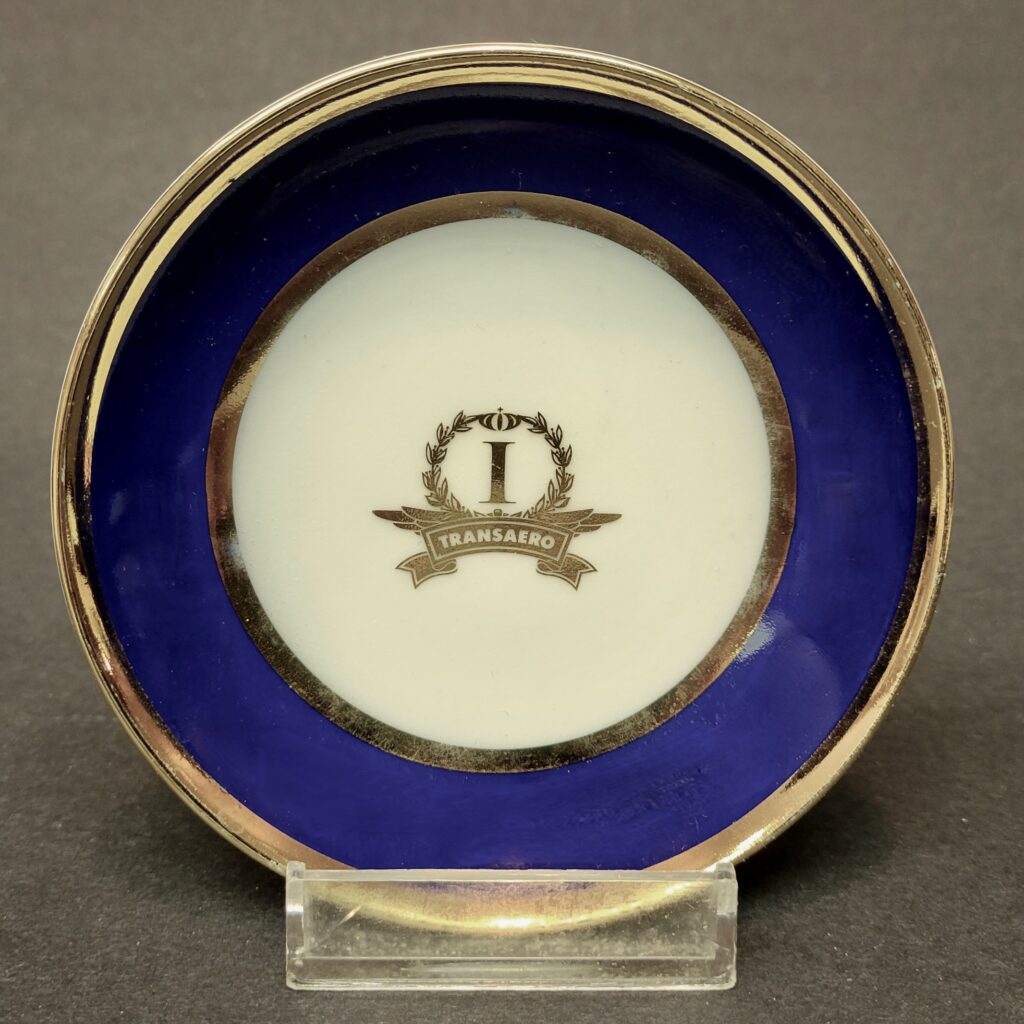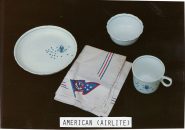Written by Dick Wallin
Good day folks, it’s Dick Wallin back here again for some of what I hope will be more new interesting columns on airline ‘DINING ITEMS’. As some of you may recall, I had a column on this subject for approximately 25 years during the period when the Captain’s Log was a printed publication. Strangely, I never received much feedback during this period, which made me wonder if hardly anyone ever read my columns. Occasionally, someone at one of the airline collectible shows would make an offhand comment about having read my columns, but I never got a single email comment or correction. So with this on-line resumption of my columns, I invite readers to email me with your comments, corrections or suggestions.
I will start with china items of American Airlines, an airline familiar to all. I’ve read that, by various measures, it is regarded as the largest airline in the world. But that isn’t the sole reason for choosing it now. I’ll go out on a limb and say that American was one of the first, if not the first, to have marked dinnerware on their flights, and I will also say that I think they had more different patterns of dinnerware than any other airline.
One of American’s dinnerware patterns, the so-called DC-3 Pattern, is the most elusive, most attractive, and most valuable pattern of any airline dishes in the world. I collected about 30 years before I got one of them; value-wise, we are talking in the range of two thousand dollars and up. I was able to obtain a copy of the original order of this pattern from the Syracuse China Co. It details each of the approximately two dozen pieces to be produced, but does not say how many were ordered. After all these years of collecting, I can verify the existence of only ten pieces of this pattern. There are reasons for this rarity; the most compelling reason is that the order is dated two weeks before Pearl Harbor. Once WW-II got under way, airlines found some of their aircraft being grabbed by the government for military usage. Building up business by having attractive dishes on flights was not a priority then!
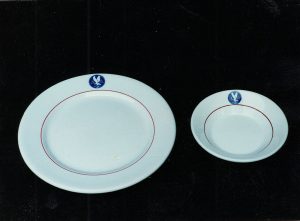
1. This I believe is the oldest pattern of AA china-no pattern name. I’ve never seen any pieces other than the dinner plate and bowl shown.
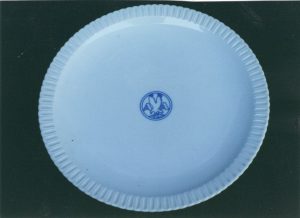
2. This is the Shelledge pattern, a name given by the manufacturer, Syracuse China Co. It’s mid-1930’s vintage. Syracuse had a magazine ad showing a number of their railroad china patterns in Shelledge and this AA piece was among them! A dinner plate and side plate are the only pieces I’ve ever seen.
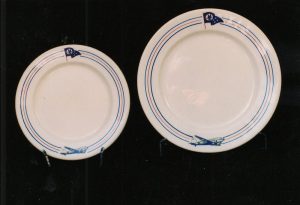
3. Here it is – the most famous, rarest and most valuable pattern of any airline china – THE AA DC-3 PATTERN! According to the Syracuse China order for this pattern, dated two weeks before the Pearl Harbor attack, a wide variety of pieces was to be produced, but how many were actually completed is left to conjecture. I had a saucer, and put out a $2,500 offer for a cup, but not one came forth. I know at least one cup exists, as I’ve seen pictures of it-it has a DC-3 on one side and the Flagship logo on the other.
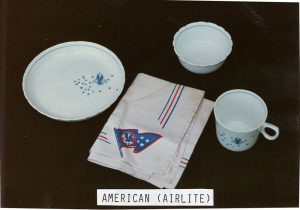
4. Here is a special pattern produced by Syracuse called the Airlite pattern, very thin and delicate pieces. It was just a 3 piece set, a plate of about 6 inches, a coffee cup and a small vegetable dish. The vegetable dish did not have the Eagle and Stars, but all 3 pieces had the AA name and Airlite on the bottom.
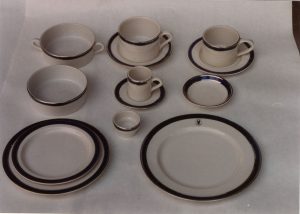
5. This is the so-called Cobalt & Platinum pattern, as you can see, a wide variety of pieces were produced, by various china manufacturers. It was used in the 1990’s. As can be seen, the dinner plate was the only piece with the Eagle logo, though all pieces had the AA name on the bottom. It was a widely used and attractive pattern.
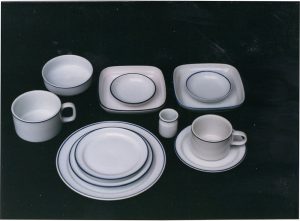
6. This was called the “American Traveler” pattern by one source. It was actually a rather bland pattern, with just a thin blue stripe; none of the pieces had the eagle logo. This pattern was also used in the Admirals Club airport club rooms. The small individual creamer is an item that I was told was not used on board, but I claim it is quasi-authentic as I bought it at the AA surplus store in Tulsa!
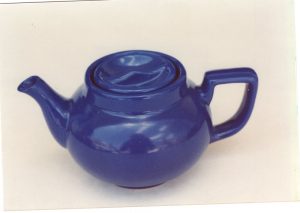
7. This solid blue tea pot was used as a companion piece to both of the two patterns described in 5 and 6. It had no top markings, but did have the AA name on the bottom.
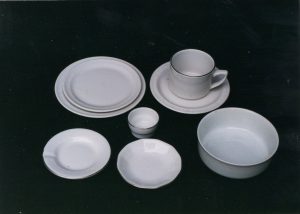
8. This was a rather obscure pattern, with some pieces having a silver rim and all having a white on white scalloped marking around the edges. Early 2000’s use.
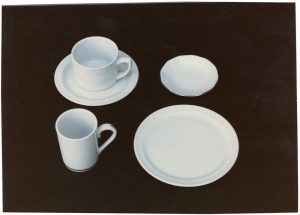
9. Some more pieces of the pattern described in 8.
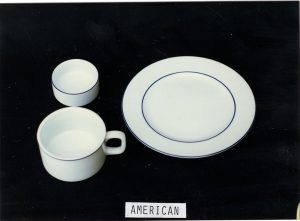
10. This was a sort of upgrade of pattern 6, with a better grade of china and a more prominent manufacturer.
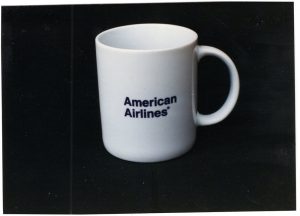
11. This coffee mug was used as a companion piece with the pattern in 10.
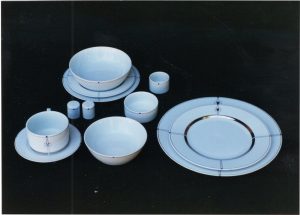
12. In the early 2000’s, American was upgrading their First and Business Class offerings, and came forth with this attractive Silver pattern to be used in First Class. After a couple of years, it came to be used in both First and Business classes. The Eagle logo appeared on several pieces and look at the little salt & peppers, something not seen in any other domestic china pattern!
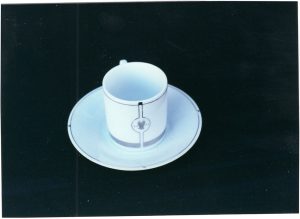
13. This is the little demitasse cup and saucer used with 12.
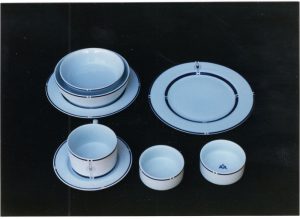
14. This is the Business Class counterpart to pattern 12. After pattern 12 began to see use in Business Class, this pattern was relegated to the Admirals Clubs.
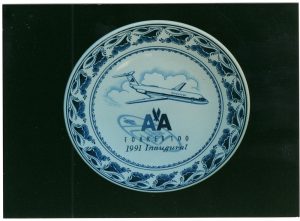
15. This plate commemorated the Inaugural flight of the Fokker 100 craft in 1991. I don’t know whether it was AA or Fokker who issued this, but that type of aircraft had a short life on AA.
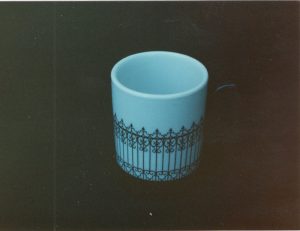
16. At one time, I think in the 1990’s, AA had some flights called “21” Flights to New York City in honor of the famous restaurant by that name. The restaurant had black iron gates such as shown on this cup. As far as is known, this cup was the only piece of this pattern.
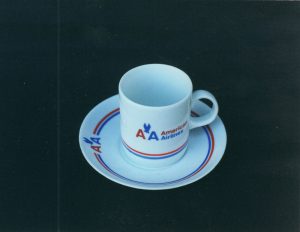
17. A nice little demitasse cup & saucer, probably a sales promo item; not known to be used on board.
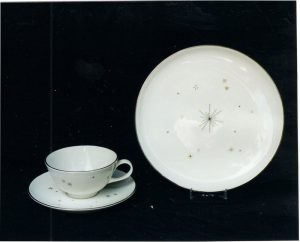
18. This is the mysterious non-pattern called the Astrojet “pattern”. It was shown in an AA Annual Report when the jets (called Astrojets) were introduced. As far as could be determined, this pattern was never used on board. But almost every piece I’ve seen had distinctive AA order numbers on the bottom, but no AA name. It is, I think, an off the shelf china pattern.
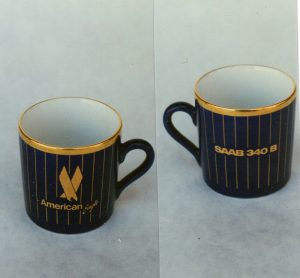
19. An attractive demi set issued for the American Eagle Saab 340B.
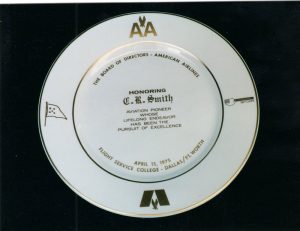
20. A special plate honoring C.R. Smith, long-time AA President; the pattern is mostly that of AA-owned Americana Hotels.
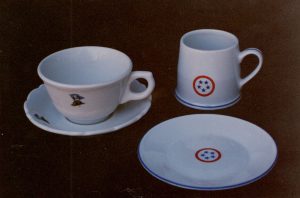
21. These pieces were made for AA’s Admiral Club airport clubrooms.
Just as an after note, I’m now 80 years old and do very little flying now. Back in my younger days, I was cranking out 100,000 or more miles a year. But now I don’t have information on what kind of china AA is using, on board or in their Admirals Club airport clubrooms. My last significant AA trip was a redeye from Rio de Janeiro to Miami in 2005, in business class on a 767, and they were still using the silver trim pattern at that time. If you have photos or descriptions of current usage, I’d be glad to include that in a future column.
My next installment will deal with American Airlines silverware and glassware.
Dick Wallin
[printicon align=”left”]
